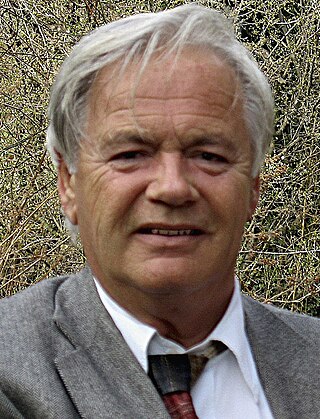History
| | This section is empty. You can help by adding to it. (July 2022) |
In psychology and neuroscience, motor planning is a set of processes related to the preparation of a movement that occurs during the reaction time (the time between the presentation of a stimulus to a person and that person's initiation of a motor response). Colloquially, the term applies to any process involved in the preparation of a movement during the reaction time, including perception-related and action-related processes. For example, the identification of a task-relevant stimulus is captured by the usual meaning of the term, "motor planning", but this identification process is not strictly motor-related. Wong and colleagues (2015) have proposed a narrower definition to include only movement-related processes: "Specification of the movement trajectory for the desired action, a description of how the end-effector will produce such an action, and finally a description of the full set of the joint trajectories or muscle activations required to execute the movement." [1]
| | This section is empty. You can help by adding to it. (July 2022) |

Perception is the organization, identification, and interpretation of sensory information in order to represent and understand the presented information or environment. All perception involves signals that go through the nervous system, which in turn result from physical or chemical stimulation of the sensory system. Vision involves light striking the retina of the eye; smell is mediated by odor molecules; and hearing involves pressure waves.

The putamen is a round structure located at the base of the forebrain (telencephalon). The putamen and caudate nucleus together form the dorsal striatum. It is also one of the structures that compose the basal nuclei. Through various pathways, the putamen is connected to the substantia nigra, the globus pallidus, the claustrum, and the thalamus, in addition to many regions of the cerebral cortex. A primary function of the putamen is to regulate movements at various stages and influence various types of learning. It employs GABA, acetylcholine, and enkephalin to perform its functions. The putamen also plays a role in degenerative neurological disorders, such as Parkinson's disease.
A motor skill is a function that involves specific movements of the body's muscles to perform a certain task. These tasks could include walking, running, or riding a bike. In order to perform this skill, the body's nervous system, muscles, and brain have to all work together. The goal of motor skill is to optimize the ability to perform the skill at the rate of success, precision, and to reduce the energy consumption required for performance. Performance is an act of executing a motor skill or task. Continuous practice of a specific motor skill will result in a greatly improved performance, which leads to motor learning. Motor learning is a relatively permanent change in the ability to perform a skill as a result of continuous practice or experience.
Habituation is a form of non-associative learning in which an innate (non-reinforced) response to a stimulus decreases after repeated or prolonged presentations of that stimulus. Responses that habituate include those that involve the intact organism or those that involve only components of the organism. The broad ubiquity of habituation across all biologic phyla has resulted in it being called "the simplest, most universal form of learning...as fundamental a characteristic of life as DNA." Functionally-speaking, by diminishing the response to an inconsequential stimulus, habituation is thought to free-up cognitive resources to other stimuli that are associated with biologically important events. For example, organisms may habituate to repeated sudden loud noises when they learn these have no consequences. A progressive decline of a behavior in a habituation procedure may also reflect nonspecific effects such as fatigue, which must be ruled out when the interest is in habituation. Habituation is clinically relevant, as a number of neuropsychiatric conditions, including autism, schizophrenia, migraine, and Tourette's, show reductions in habituation to a variety of stimulus-types both simple (tone) and complex (faces).
In neurology, the Bereitschaftspotential or BP, also called the pre-motor potential or readiness potential (RP), is a measure of activity in the motor cortex and supplementary motor area of the brain leading up to voluntary muscle movement. The BP is a manifestation of cortical contribution to the pre-motor planning of volitional movement. It was first recorded and reported in 1964 by Hans Helmut Kornhuber and Lüder Deecke at the University of Freiburg in Germany. In 1965 the full publication appeared after many control experiments.
Dysmetria is a lack of coordination of movement typified by the undershoot or overshoot of intended position with the hand, arm, leg, or eye. It is a type of ataxia. It can also include an inability to judge distance or scale.
Motor control is the regulation of movement in organisms that possess a nervous system. Motor control includes reflexes as well as directed movement.
The two-streams hypothesis is a model of the neural processing of vision as well as hearing. The hypothesis, given its initial characterisation in a paper by David Milner and Melvyn A. Goodale in 1992, argues that humans possess two distinct visual systems. Recently there seems to be evidence of two distinct auditory systems as well. As visual information exits the occipital lobe, and as sound leaves the phonological network, it follows two main pathways, or "streams". The ventral stream leads to the temporal lobe, which is involved with object and visual identification and recognition. The dorsal stream leads to the parietal lobe, which is involved with processing the object's spatial location relative to the viewer and with speech repetition.
Visual search is a type of perceptual task requiring attention that typically involves an active scan of the visual environment for a particular object or feature among other objects or features. Visual search can take place with or without eye movements. The ability to consciously locate an object or target amongst a complex array of stimuli has been extensively studied over the past 40 years. Practical examples of using visual search can be seen in everyday life, such as when one is picking out a product on a supermarket shelf, when animals are searching for food among piles of leaves, when trying to find a friend in a large crowd of people, or simply when playing visual search games such as Where's Wally?

Mental chronometry is the scientific study of processing speed or reaction time on cognitive tasks to infer the content, duration, and temporal sequencing of mental operations. Reaction time is measured by the elapsed time between stimulus onset and an individual's response on elementary cognitive tasks (ETCs), which are relatively simple perceptual-motor tasks typically administered in a laboratory setting. Mental chronometry is one of the core methodological paradigms of human experimental, cognitive, and differential psychology, but is also commonly analyzed in psychophysiology, cognitive neuroscience, and behavioral neuroscience to help elucidate the biological mechanisms underlying perception, attention, and decision-making in humans and other species.
Premovement neuronal activity in neurophysiological literature refers to neuronal modulations that alter the rate at which neurons fire before a subject produces movement. Through experimentation with multiple animals, predominantly monkeys, it has been shown that several regions of the brain are particularly active and involved in initiation and preparation of movement. Two specific membrane potentials, the bereitschaftspotential, or the BP, and contingent negative variation, or the CNV, play a pivotal role in premovement neuronal activity. Both have been shown to be directly involved in planning and initiating movement. Multiple factors are involved with premovement neuronal activity including motor preparation, inhibition of motor response, programming of the target of movement, closed-looped and open-looped tasks, instructed delay periods, short-lead and long-lead changes, and mirror motor neurons.

Negative priming is an implicit memory effect in which prior exposure to a stimulus unfavorably influences the response to the same stimulus. It falls under the category of priming, which refers to the change in the response towards a stimulus due to a subconscious memory effect. Negative priming describes the slow and error-prone reaction to a stimulus that is previously ignored. For example, a subject may be imagined trying to pick a red pen from a pen holder. The red pen becomes the target of attention, so the subject responds by moving their hand towards it. At this time, they mentally block out all other pens as distractors to aid in closing in on just the red pen. After repeatedly picking the red pen over the others, switching to the blue pen results in a momentary delay picking the pen out. The slow reaction due to the change of the distractor stimulus to target stimulus is called the negative priming effect.
In physiology, an efference copy or efferent copy is an internal copy of an outflowing (efferent), movement-producing signal generated by an organism's motor system. It can be collated with the (reafferent) sensory input that results from the agent's movement, enabling a comparison of actual movement with desired movement, and a shielding of perception from particular self-induced effects on the sensory input to achieve perceptual stability. Together with internal models, efference copies can serve to enable the brain to predict the effects of an action.
In neuroscience, the lateralized readiness potential (LRP) is an event-related brain potential, or increase in electrical activity at the surface of the brain, that is thought to reflect the preparation of motor activity on a certain side of the body; in other words, it is a spike in the electrical activity of the brain that happens when a person gets ready to move one arm, leg, or foot. It is a special form of bereitschaftspotential. LRPs are recorded using electroencephalography (EEG) and have numerous applications in cognitive neuroscience.
Task switching, or set-shifting, is an executive function that involves the ability to unconsciously shift attention between one task and another. In contrast, cognitive shifting is a very similar executive function, but it involves conscious change in attention. Together, these two functions are subcategories of the broader cognitive flexibility concept.

Neuroscience of free will, a part of neurophilosophy, is the study of topics related to free will using neuroscience and the analysis of how findings from such studies may impact the free will debate.

Lüder Deecke in Lohe-Rickelshof, Germany is a German Austrian neurologist, neuroscientist, teacher and physician whose scientific discoveries have influenced brain research and the treatment and rehabilitation of neurological disorders.
In the psychology of perception and motor control, the term response priming denotes a special form of priming. Generally, priming effects take place whenever a response to a target stimulus is influenced by a prime stimulus presented at an earlier time. The distinctive feature of response priming is that prime and target are presented in quick succession and are coupled to identical or alternative motor responses. When a speeded motor response is performed to classify the target stimulus, a prime immediately preceding the target can thus induce response conflicts when assigned to a different response as the target. These response conflicts have observable effects on motor behavior, leading to priming effects, e.g., in response times and error rates. A special property of response priming is its independence from visual awareness of the prime.

A motor program is an abstract metaphor of the central organization of movement and control of the many degrees of freedom involved in performing an action.p. 182 Signals transmitted through efferent and afferent pathways allow the central nervous system to anticipate, plan or guide movement. Evidence for the concept of motor programs include the following:p. 182
Stimulus–response (S–R) compatibility is the degree to which a person's perception of the world is compatible with the required action. S–R compatibility has been described as the "naturalness" of the association between a stimulus and its response, such as a left-oriented stimulus requiring a response from the left side of the body. A high level of S–R compatibility is typically associated with a shorter reaction time, whereas a low level of S-R compatibility tends to result in a longer reaction time, a phenomenon known as the Simon effect.